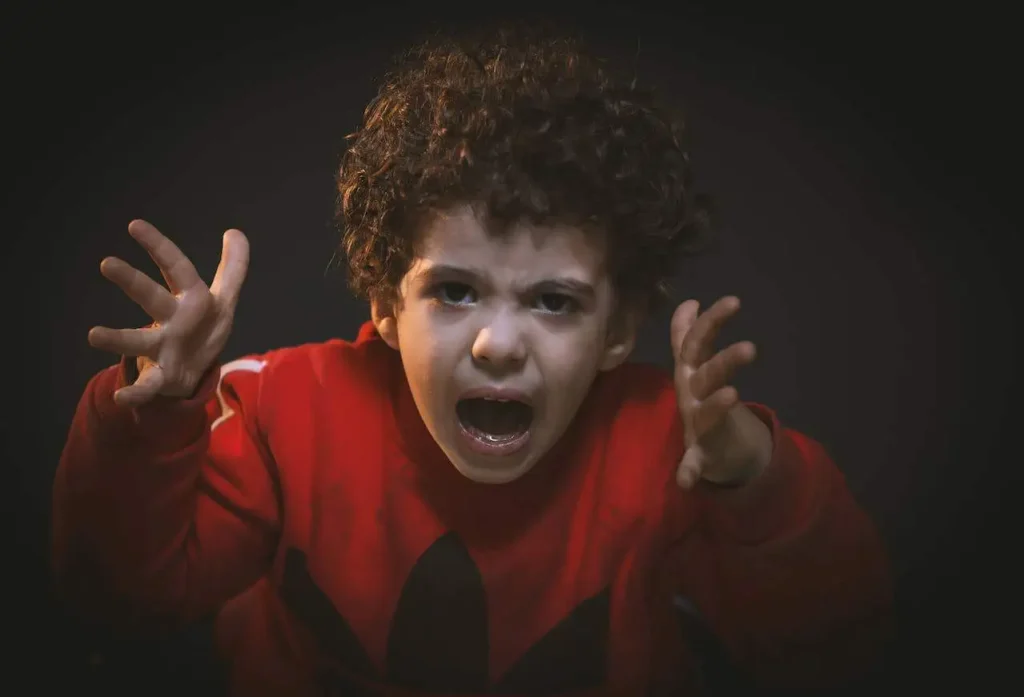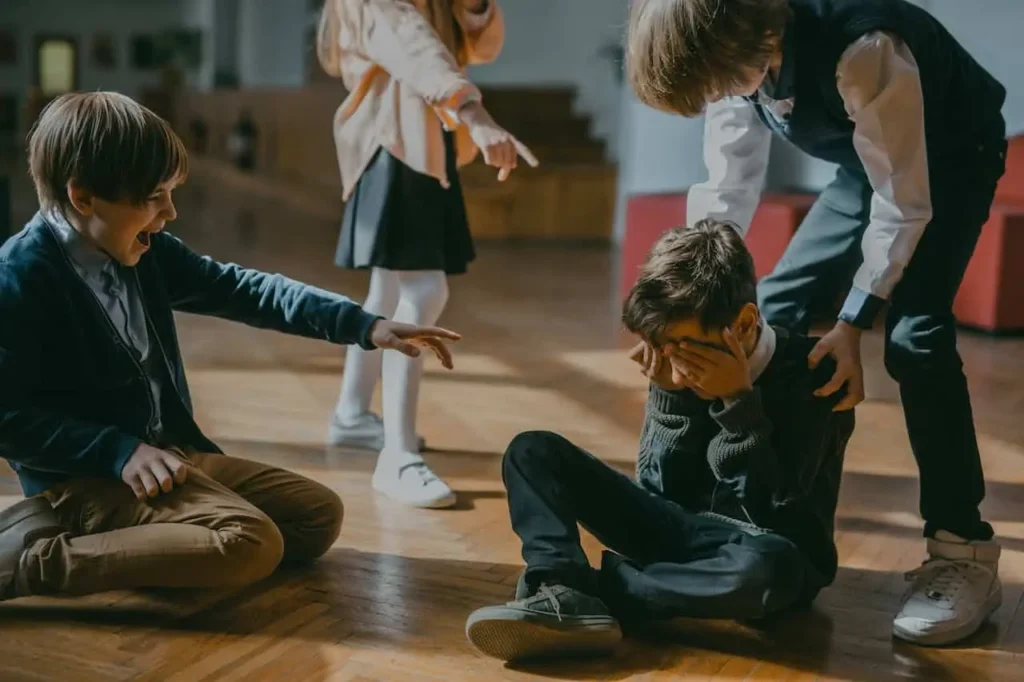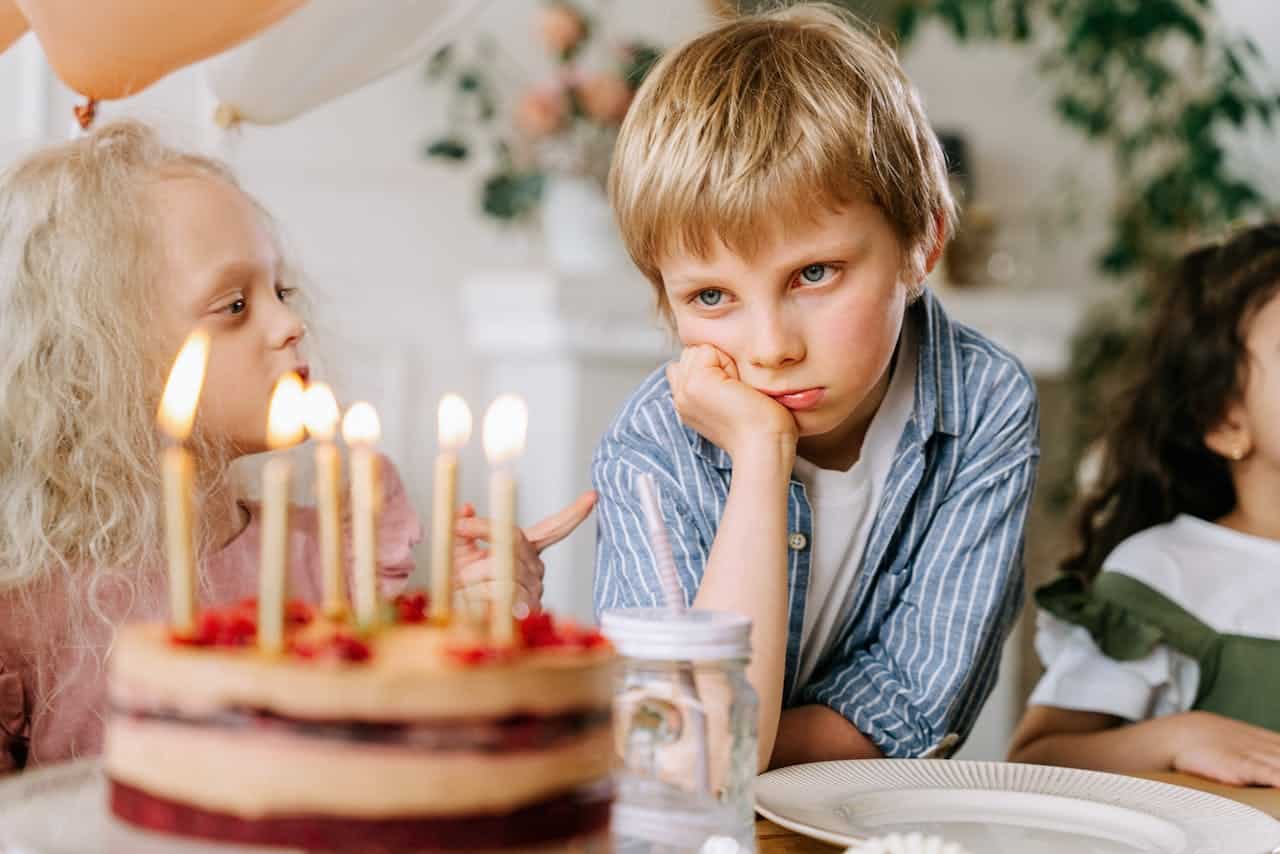You are a teacher or a parent who wants emotional regulation in your kids and searching for emotional regulation activities.
Research shows that most kids seem to control their behavior better between the ages of 3 and 7, especially during their preschool years.
Your child really needs emotional regulation if he or she is facing all or some of the problems listed below.
Emotional irregularities in children:
- Difficulty calming down after becoming upset
- Consistent low mood or sadness that interferes with daily activities
- Excessive worrying about various aspects of life, such as school, friendships, or family issues
- Avoidance of social activities or isolation from peers
- Difficulty falling asleep or staying asleep
- Changes in eating habits, such as a loss of interest in food
- Problems focusing on tasks or schoolwork and concentration issues
- Loss of previously acquired skills or behaviors, such as toileting or language skills
- Intense and irrational fears that interfere with daily life
- Avoidance of specific situations or activities due to fear
What are emotions?
Emotions are feelings we have that tell us about the world around us and how we’re doing.
Let’s categorize them as:
- Positive Emotions: These may be happiness, love, excitement, gratitude, etc.
- Challenging Emotions: These include sadness, anger, fear, disgust, etc.
As we grow up, we start feeling more complex emotions like pride, shame, guilt, and envy. These feelings are influenced by our culture and the people around us.
What is emotional regulation?

We’ve all said or done something in the past that we later wish we could take back or at least wish we hadn’t said or done.
We do it in haste or in simple words, we don’t think before reacting. It is rightly said, first weigh, then speak.
Let’s take help from some examples
1. Let’s Race!
Imagine you are traveling in a car with your people, someone urges you for race, instead of putting your foot on the accelerator, you lift because the lives of your people are more important than self-satisfaction.
2. Don’t Punish the Child!
Your child has made a mistake, the punishment is due. But instead of punishing, you give him a big hug and pat him on the back. You know that love melts stones.
Recognizing emotions in daily life and giving a controlled reaction in response to certain types of emotions is called emotional regulation.
Good news:
Emotional regulation is an executive functioning skill that can be easily learned. All it takes is a little attention and a little time.
How do you know if your child needs emotional regulation?

Here are some indicators that your child might be struggling with emotional regulation:
Extreme Tantrums:
A child who, when upset, might scream, kick, or throw things instead of expressing their feelings with words. These intense tantrums could indicate difficulties in managing and regulating their emotions.
Persistent Sadness:
A child who often seems very sad, even in situations where other kids might feel happy. They might not show interest in activities they used to enjoy.
Difficulty Making Friends:
A child who struggles to make friends because they have trouble understanding social cues or expressing themselves appropriately.
Frequent Anxiety:
A child who worries excessively about everyday situations or upcoming events. They might feel nervous, have trouble sleeping, or complain about stomach aches or headaches due to their anxiety.
Limited Emotional Vocabulary:
A child who finds it hard to describe their feelings with words. Instead of saying, “I’m frustrated,” they might just say, “I feel bad,” indicating a limited emotional vocabulary.
Impulsive Reactions:
A child who acts without thinking, perhaps hitting someone when they are angry or grabbing a toy without asking. This impulsive behavior may stem from challenges regulating their immediate emotional responses.
Withdrawal and Isolation:
A child who frequently isolates themselves from others. They may avoid social situations or activities, indicating difficulties in coping with emotions and interactions with peers.
Overly Sensitive:
A child who gets extremely upset over small issues, like a minor change in plans or a small mistake. Their heightened sensitivity could be an indication of challenges in handling and regulating emotions.
Factors affecting emotional intelligence in daily life

- Family environment: Children learn by observing their parents. if parents constructively express their feelings and manage stress appropriately, children are more likely to adopt similar behaviors. Open and honest communication within the family allows children to express their emotions without fear of judgment.
- Educational environment: Teacher role models, classroom environments, and emotional learning programs within the schools have a great impact on children’s emotional regulation.
- Parenting style:
- Parents who are like coaches. They set rules but also listen and explain. They’re warm and supportive. kids learn because they feel supported.
- Parents, who are like strict bosses. They set rules without much room for discussion. Children may struggle with expressing emotions openly because they fear strict consequences.
- Parents who are like friends. They’re lenient and may avoid setting many rules. Kids might find it challenging to control their emotions because they’re not used to clear boundaries. They may face self-discipline problems.
- Cultural environment: Every culture and every family has its own set of beliefs, values, and rules. In cultures where mental health is openly discussed and addressed, children may feel more comfortable seeking help and managing their emotions in a healthy way.
- Stressful situations: Too much stress can make kids feel overwhelmed. Stress can make it tough to concentrate on tasks. When kids face stress, their bodies and minds react, making it more challenging for them to control their emotions. Having someone to talk to or lean on during stress makes a difference.
Comparison of emotional regulation and dysregulation in children

We will see the reactions of Kid A and Kid B when they lose their games.
| 1. Kid A feels disappointed. 2. Expresses his feelings calmly, saying, “Oh, I didn’t win this time. It’s okay; we’ll do better next time.” 3. Quickly joins another activity with a positive attitude. 4. This results in a boost of self-confidence that leads to winning the next game. | 1. Kid B feels disappointed. 2. Throws the game pieces and says, “It’s not fair! I hate this stupid game.I don’t want to do anything!” 3. Refuses to participate in any other activity. 4. This results in a loss of self-confidence that hinders playing next game rather than winning. |
10 Emotional Regulation Activities For Kids
Before going towards activities, you must read one basic concept about the human mind, which I have discussed in executive functioning activities.
The very first thing in the process of regulation of motions is “recognition of motions.”
We cannot process anything before understanding it, and when we see something with our own eyes, the process of understanding becomes easy.
But the question is, can we see our emotions?
Obviously, we cannot, but there is still one way.
By writing them exactly as they are, on a piece of paper, identifying them, naming them, and then hence qualifying to regulate them.
Let’s see the following activity:.
1. Help your child write the answers
Repeat this activity at the same time for three days and compare the answers.
This is the best way to understand emotional weak points and to put some corrections in the right place.
- How do you feel when you’re really happy?
- What can you do when you’re feeling sad to make yourself feel better?
- Why is it important to take deep breaths when you’re upset?
- Can you name a time when you felt proud of yourself? What did you do?
- How can you healthily express your anger without hurting others?
- Why is it important to share your feelings with someone you trust?
- What are some activities that help you release stress and tension?
- How do you know when it’s a good time to take a break and calm down?
- Can you think of a time when you had to wait for something you really wanted? How did you handle the waiting?
- What do you do when you’re feeling nervous or anxious?
- How can you show kindness and empathy towards your friends when they are upset?
- What words or phrases can you use to let someone know you need help with your emotions?
- How do you feel when someone says something nice to you?
- Why is it important to apologize when you’ve made a mistake that hurts someone’s feelings?
- What do you do when you’re feeling overwhelmed with too many emotions at once?
- How can you turn a bad day into a better one with a positive mindset?
2. Emotional Regulation by “Breathing Strategies”
This is a focused and research-backed activity to calm the nervous system, reduce stress, and promote a sense of control.
Help your kids to:
- Lie down with a soft toy on your belly.
- Close your eyes and imagine that the air is full of calmness coming into the body.
- Breathe in slowly through your nose, making the toy rise.
- Now imagine air is taking all the tension out of the body.
- Breathe out slowly through your mouth, making the toy fall.
- Repeat several times and see the difference.
3. Emotional Regulation by Emotion Faces
This activity provides a visual aid for children to identify and express their feelings. When they associate facial expressions with specific emotions, you can discuss the reasons behind their emotions and help with better self-regulation.
- Create a chart with faces showing different feelings (happy, sad, angry, surprised).
- Ask your child to point to the face that matches how they feel.
- Discuss why they feel that way and brainstorm ways to handle those emotions.
4. “Feelings Journal” as Emotional Regulation Activities
When children reflect on their daily experiences, their emotional literacy is enhanced. In turn, a healthy habit of expressing emotions through writing or drawing develops silently.
What you have to do is encourage your little one to:
- Use a notebook to draw or write about your emotions.
- Describe what happened and how it made you feel.
- Write how you respond to it
- Think and write about what a better way to respond could be.
5. “Emotion Charades” as Emotional Regulation Activities
This is a fun and focused activity that helps kids recognize and express different emotions.
It also enables kids to understand “how others feel” and promotes empathy.
- Write or draw different emotions like happy, sad, angry, surprised, and excited on small pieces of paper or index cards.
- Discuss and encourage your kids to mimic the expressions associated with each emotion.
- In this activity, participants act out a word or phrase without speaking, and others try to guess what it is.
- Each child will take turns drawing a card and acting out an emotion.
- Discuss with kids how different emotions feel, what they mean, and how we can control our reactions.
6. “Calm Down Corner” as Emotional Regulation Activities
Whenever we are upset, we eagerly find a space where we can spend some time alone in silence. After sitting some time quietly and taking a few deep breaths, we feel calm and in control.
Similarly, our children also need such a quiet place.
What you have to do is to:
- Select a quiet and comfortable area in your home where your child can have some privacy and peace
- To make it comfortable, you can place pillows, soft cushions, or a cozy chair in the corner
- Use calming colors such as green and blue, and if possible, incorporate dimmable lighting and mindfulness tools like stress balls and fidget spinners to help redirect focus and provide a sense of security
Your kid will feel much better if you help and practice together calming strategies and emphasize deep breathing. Praise and encourage your child when they choose to use the Calm Down Corner independently.
7. “Mindful Coloring” as Emotional Regulation Activities
Focusing on the present moment is itself a great skill for kids, and this activity is focused on this skill. “Focus on the present moment” has its own role in a kid’s emotional regulation process.
Let me just clarify one important thing:
“Focus” is one of the great qualities that human mind possesses. In simple terms, you can say “one thing at a time.”. If you want to perform a task well, put aside all other necessary or unnecessary tasks at that particular time.
Guide your child appropriately and emphasize of focus during every activity.
All you have to do in this focused activity is help your kid or teen to:
- Pick a coloring sheet and focus on coloring one section at a time
- Pay attention to the colors, the feel of the crayon, and your breathing
- Feel free to choose colors that reflect your mood or make you feel relaxed
- Think about something you are grateful for
8. “Count to Ten” as Emotional Regulation Activities
Yes, a pause before reacting. Which means better self-control…a great skill related to emotional intelligence that just needs a little practice and some focus.
This activity is specially designed to counter impulsive reactions, which is a common problem in the majority of children.
Help your kid or teen with this coping strategy to streamline their emotions.
Help your child practice and tell them:
- When something makes you feel upset, mad, or frustrated, stop for a moment
- Take a deep breath in and start counting slowly from one to ten in your head
- As you count, think about air filling your lungs with calmness and blood carrying it throughout the body with every count
- By the time you reach ten, you’ll feel more in control and ready to handle the situation
9. Regulation of Emotions by “Positive Affirmations”
Positive affirmations have magical effects on our emotional intelligence. The key to this activity is “regular repetition.”
We have come up with three sets of positive affirmations, and if you put them into your kid’s practice, many researchers have guaranteed good results.
These can be the best emotional regulation activities for your kids and teens. Now it’s up to you to encourage them to repeat them as they are.
Set 1. Imagine that each of the following sentences truly represents your personality.
- “I am brave, and I can face new situations with confidence.”
- “I am growing and learning every day, and that’s something to be proud of.”
- “I am capable of handling whatever comes my way.”
- “I am in control of my thoughts, and I choose to focus on the positive.”
- “My feelings are valid, and it’s okay to express them in a healthy way.”
Set 2. Fill in the blanks by thinking positively.
- “I am —, and that makes me special.”
- “I — and find joy in every day.”
- “I — in myself and my abilities.”
- “I am—to myself and others.”
- “I am — just as I am.”
- “I am —, as I can bounce back from challenges.”
Set 3. Brainstorm and complete these sentences.
- “I am smart and capable because…”
- “I am a good friend because…”
- “I am kind and caring because…”
- “I am a problem solver because…”
- “I am worthy of success and happiness because…”
10. “Hug it Out” as Emotional Regulation Activities
Imagine you had a tough day at school, and you feel a bit sad. You grab your favorite stuffed animal, give it a big hug, and hold on for a moment.
That hugging action releases oxytocin, making you feel a little happier and more secure. It’s like a friendly pat on the back from the inside!
Help your kids or teens with this type of instant reliever.
- When you’re feeling sad, angry, or stressed, find a quiet and comfortable space.
- Take a deep breath. Inhale slowly through your nose, and exhale through your mouth. Do this a few times to help calm your mind.
- Now, give yourself a hug, or if you have a soft toy, hug it tightly. Imagine you’re giving all your worries a big squeeze.
- Feel the warmth and comfort of the hug. Pay attention to how it makes you feel safe and cozy.
- Keep breathing deeply, and as you exhale, imagine letting go of the negative feelings. Let the hug be like a magic trick that makes the bad feelings disappear.

Conclusion:
We have brought these activities to you in a very easy and understandable manner. By implementing these, you can easily find a solution for the emotional regulation of your children.
These emotional regulation activities are easy to perform.
These activities are also compatible with daily life.
These activities do not require any extra effort.
The must-have thing is “regularity.”. And the key to unlocking magical results is “consistency.”.
If any activity is done regularly, researchers say that after some time, results start to appear.
Pick one that fits with your child’s personality, and take advantage of it.

10 thoughts on “10 Focused Emotional Regulation activities for kids”
Comments are closed.